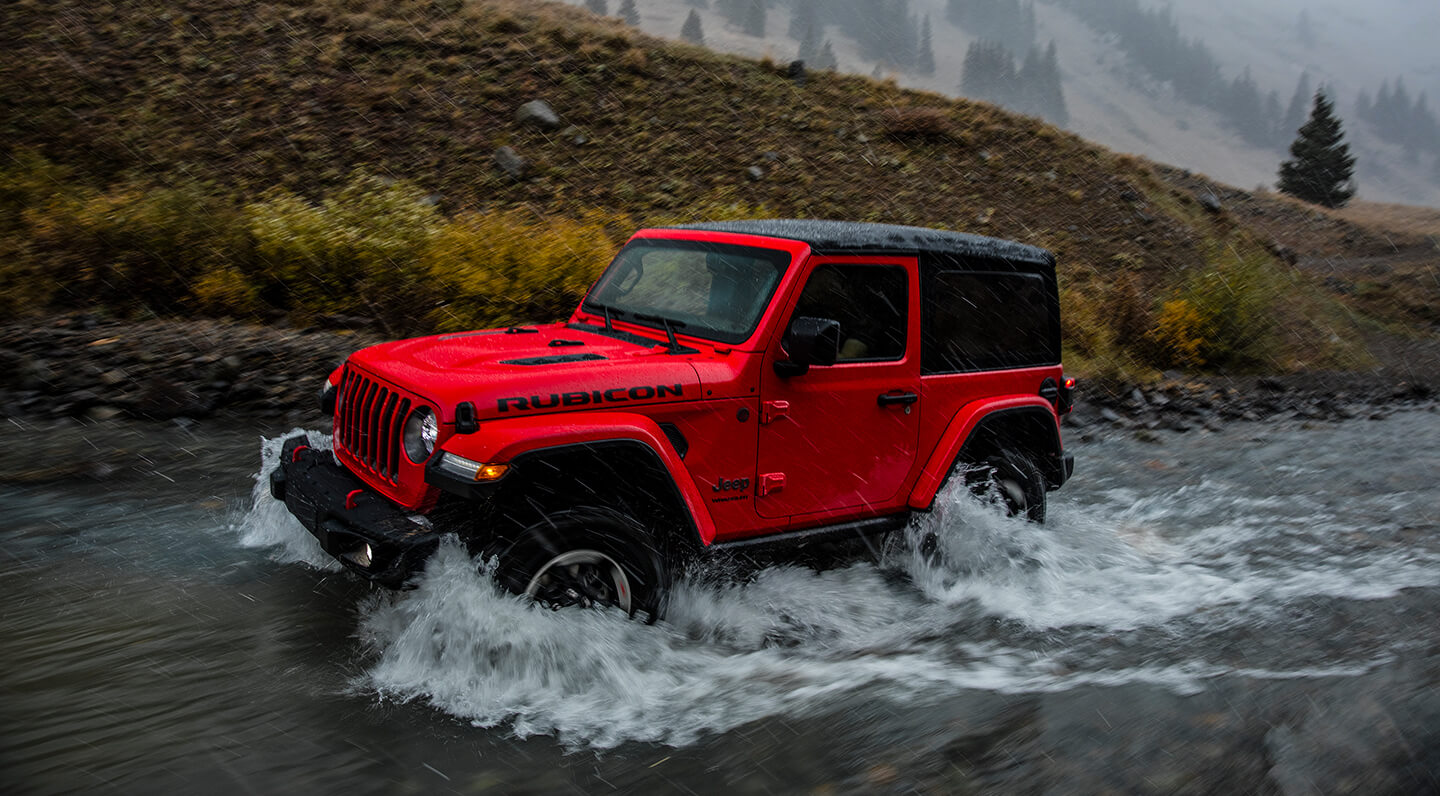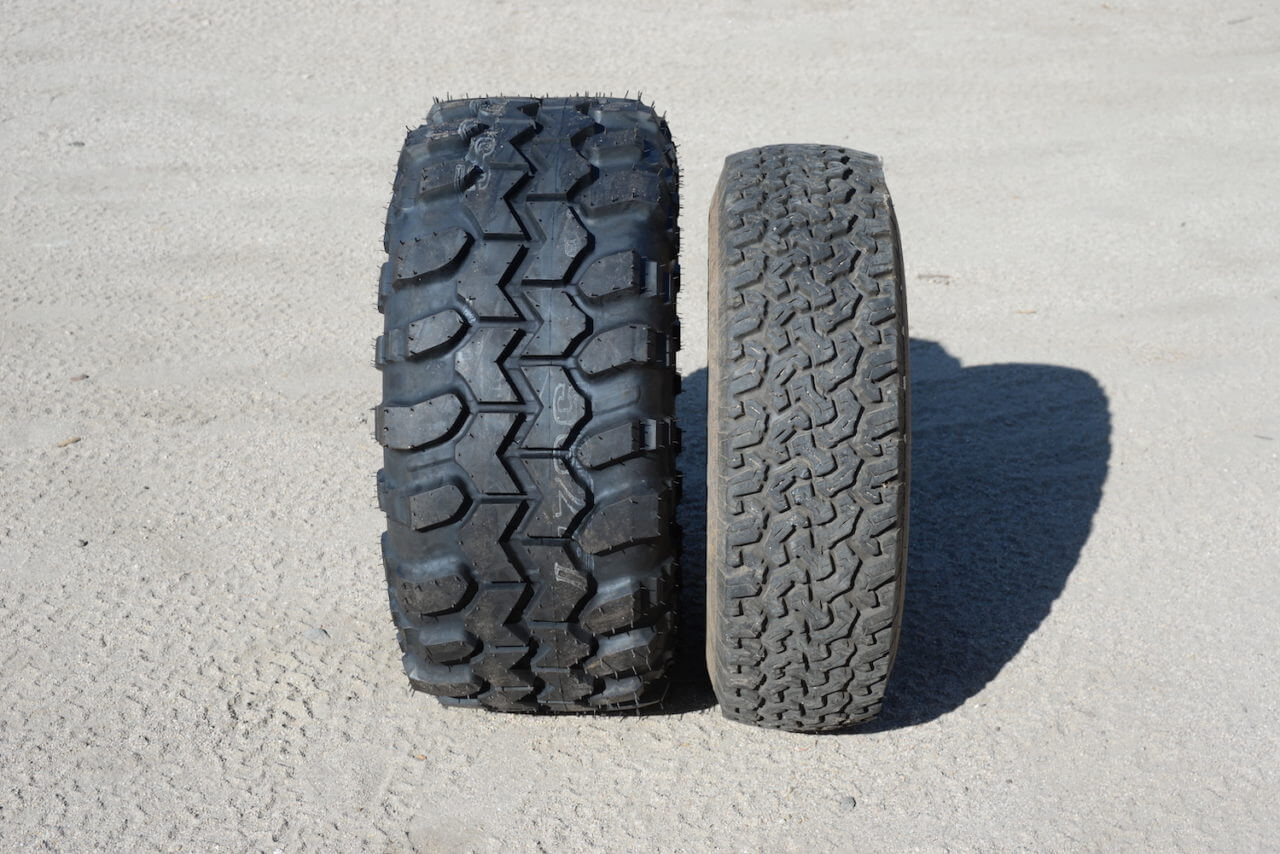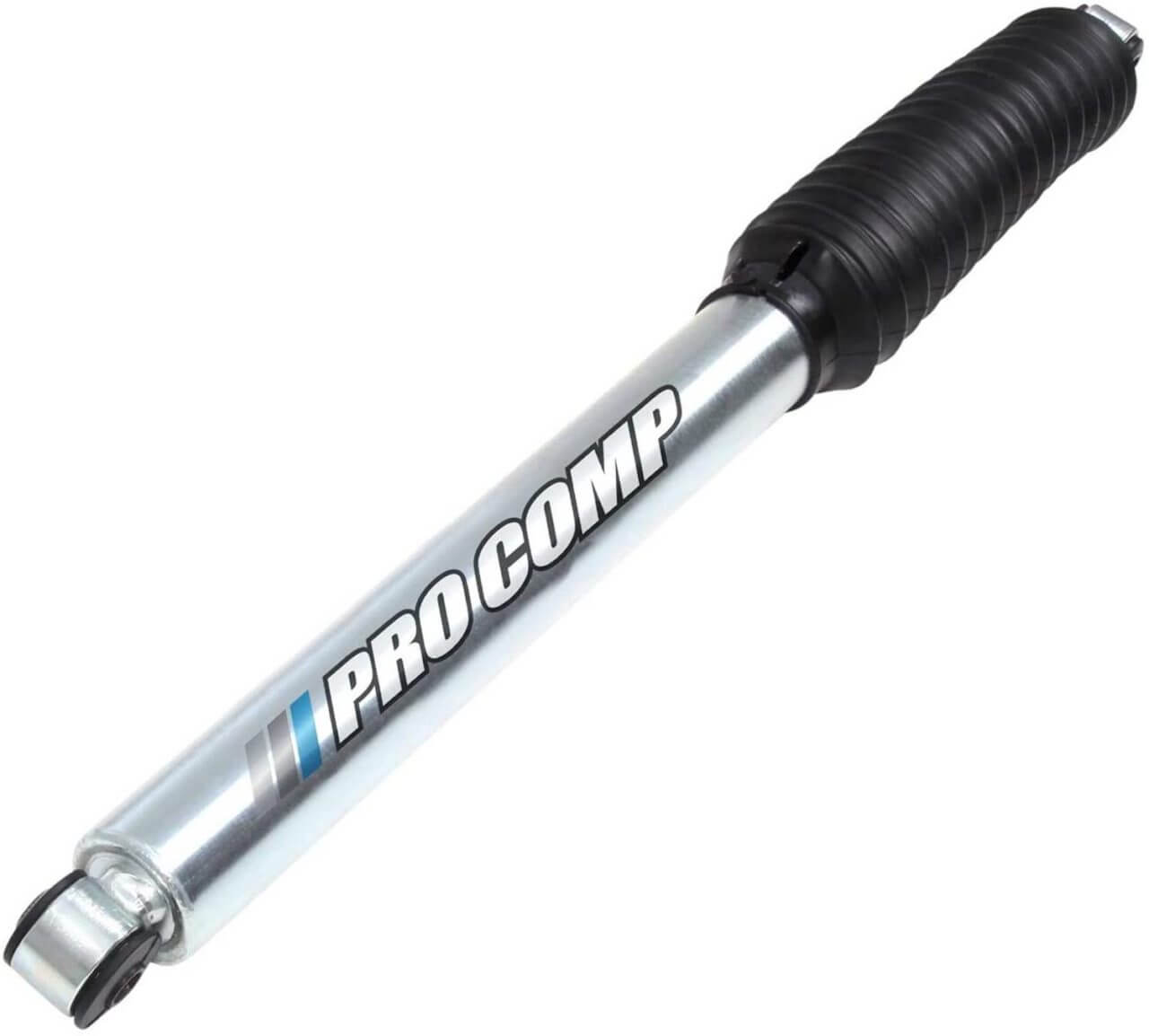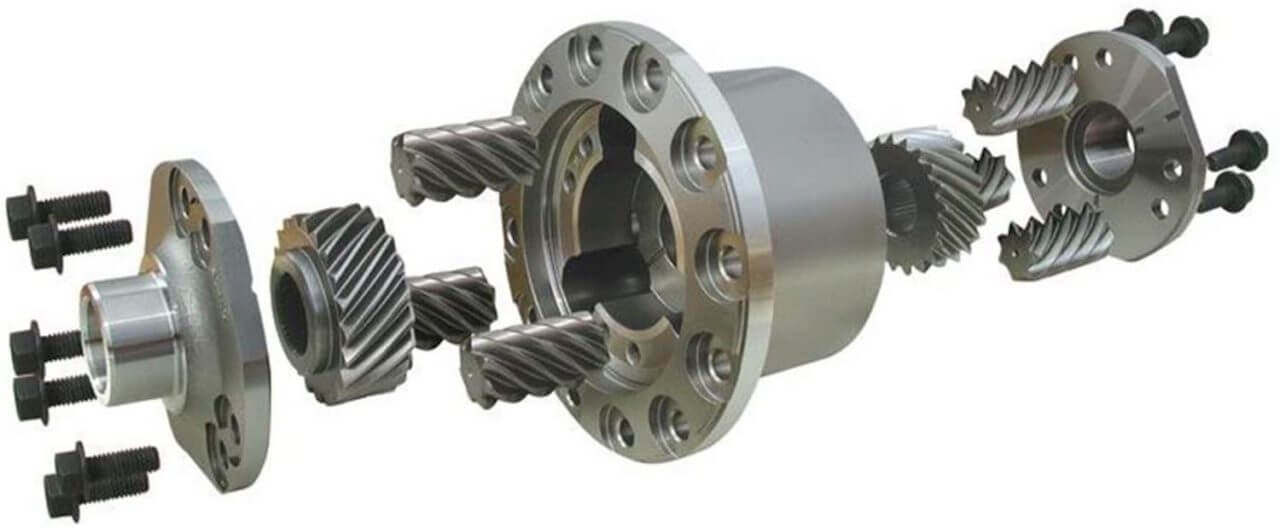
Everything You Need To Know About Driving A Modified 4×4 In The Rain
Photos: John Cappa and courtesy of the manufacturers
Contrary to what you might think, your lifted off-road capable 4×4 rolling on big knobby tires may not perform as well as a stock 4×4 on rain soaked highways and streets. Wet weather driving in any vehicle can be tricky, but a modified 4×4 may require extra attention when water hits the roads. Also, carefully selecting the right aftermarket parts can help improve wet weather driving in a built 4×4. Follow along and we’ll walk you through the best way to tackle wet weather driving in your modified 4×4 and what aftermarket parts will help your vehicle stick to the rain-soaked road in inclement weather.

For best wet road performance look for an all-terrain or tweener tire with siping and circumferential grooves, or grooves that pump the water away from the tread contact patch. This will help avoid hydroplaning and keep the tread in contact with the pavement.

Chunky mud-terrain tires with smoothed-face lugs offer poor traction on wet surfaces. The water becomes trapped between the tread lug and the road surface, which can more easily cause hydroplaning.
Wet Weather Traction
The first rain of the season generally results in extremely slick roads. Spilled oils and other contaminants ooze out of the road and mix with the rainwater making for less than ideal traction conditions. Always be extra careful when driving in the first rain of the season. Heavier rain can wash slick mud, sand and silt into the roadway. Many new 4x4s offer a full-time 4×4 transfer case shifter selection. This setting can be safely used on the street to help maintain traction in wet or dry conditions without causing harm to the vehicle. In most cases you’ll want to avoid using a part-time 4×4 transfer case selection on the street, unless there is quite a bit of tire slippage.
Tire tread design also helps increase traction in wet weather. Look for tires with plenty of sipes cut into the tread lugs. These small cuts open up as the tire rolls over the pavement and help grip the wet surface. Luggy mud tires with large smooth tread lugs will not grip the wet street as well as an all-terrain or tweener tire.
Avoid using automatic and selectable locking differentials on slippery streets whenever possible. These traction devices have a tendency to put a vehicle into a slide. Factory and aftermarket limited slip differentials are best suited for running roads in rainy conditions. Aftermarket gear-driven limited slips will outlast the OE clutch-pack style limited slip differentials.

Extra wide tires are more likely to hydroplane in standing water on a road surface. They will also pull the vehicle to one side or the other more than narrow tires when you hit a pool of water.
Hydroplaning In The Rain
On wet roads many vehicles begin to partially hydroplane at about 35 miles per hour. As your speed increases, surface water cannot be removed fast enough and the tires start to ride on the layer of water. The tires can lose complete contact with the road at around 55 mph. Standing and flowing water are your biggest enemy. Avoid the road edges where standing water can accumulate and reduce your speed when you see puddles encroaching the road. The pooled water can cause your vehicle to quickly veer to one side or the other. Unfortunately, wide off-road tires can exacerbate the potential of a vehicle to hydroplane on a wet road. If you regularly drive in rainy conditions, choose tires with circumferential grooves. These grooves help pump water out of the tread area, which keeps the tires in contact with the road.

Should you begin to hydroplane or slide on a wet street, firmer aftermarket sway bars will go a long way in helping keep a top-heavy lifted 4×4 upright. Bolt-on heavy-duty aftermarket sway bar kits are available for many popular 4x4s.
4×4 Stability In The Rain
Traction on a wet surface can be just as unpredictable as the vehicle stability. Of course lifted 4x4s have more ground clearance for better off-road performance, but they also have a higher center of gravity. Vehicles with loaded roof racks or rooftop tents will also experience a raised center of gravity. Ultimately, the problem isn’t just losing traction on a wet road and sliding sideways, it’s what you hit while sliding uncontrollably. A curb, soft soil or a patch of road with slightly more traction could be enough to put your vehicle on its lid when caught up in a slide or spinout on wet pavement. Controlling the sway of your lifted 4×4 will help keep it stable with the tires on terra firma. Larger aftermarket performance anti-sway bars can be installed on a lifted 4×4 to help combat a raised center of gravity and improve cornering in both wet and dry conditions. If you notice that your 4×4 has an understeer condition on slippery wet roads (front tires slide before the rear tires in a corner) you can increase the effectiveness of the sway bar on the rear of the 4×4, thereby reducing the tendency of the vehicle to push into corners. If your 4×4 has a tendency to oversteer (rear end slides out before the front in slick wet corners) you can increase the effectiveness of the front sway bar to reduce sliding. Bolt-on aftermarket heavy-duty anti-sway bars are available for many popular 4×4 applications to help you get better control of your vehicle on wet pavement. Heavy-duty aftermarket gas charged shocks also help increase the stability of a lifted 4×4 on big tires in the rain.

Overly soft suspensions can cause a vehicle to be a handful if it begins to hydroplane. Consider upgrading to firmer aftermarket gas charged shocks to help control suspension movement. A more stable suspension will make driving out of a hydroplane event much easier.
Rain Visibility
One big advantage a lifted 4×4 has over the rest of the cars on the road is forward visibility. With an up high seating position you can see what’s happening further ahead, giving you plenty of time to slow down or maneuver away from a rain-caused wreck. Being higher up also reduces the tire spray that hits your windshield. Unfortunately, people that follow too close to your lifted 4×4 will see the opposite. Large diameter off-road tires can fling a lot of water into the air. Drivers that follow too close to the back of your 4×4 will not have great visibility in the rain. The hope is that they will back off a bit to create some space, but many drivers are in too much of a hurry and often make foolish decisions. Ultimately, if an accident does occur, it’s usually to your benefit to be up and away from any impact in a lifted 4×4.

Limited slip differentials provide the most predictable traction on slick wet streets. Aftermarket gear-driven limited slips will significantly outlive traditional factory clutch-type limited slips, many of which could be nearly worthless in less than 30,000 miles.
Top 14 Wet Weather Driving Tips
- Use your headlights regardless of how light the rain is. It helps you see and lets others see you.
- Reduce your speed.
- If the roads have been dry for some time, drive extra slow. Oil and grease will ooze out of the road causing it to be slick at first.
- Allow for extra space around your vehicle. You’ll have more time to react if something goes wrong.
- Brake slowly to avoid sliding and to give the vehicles behind you more time to stop.
- Stay in the tire tracks of the vehicle in front of you. The water will have already been splashed away offering your tires improved traction.
- Avoid large trucks and buses. The tires will throw water making it hard to see.
- Use the defrosters and make sure you can see out of the windows.
- The road shoulder can become very soft in the rain. Stay on the road to avoid getting stuck.
- Be extra careful when driving through puddles. They could be deep.
- Avoid driving through moving water. You could be swept away. It’s hard to judge how deep it is.
- If visibility is absolutely terrible, pull over to a safe location.
- If your 4×4 hydroplanes, don’t overreact. Release the throttle slowly and steer straight until your 4×4 regains traction.
- Prior to the rainy season, inspect and replace worn windshield wipers, tires and brakes.



2